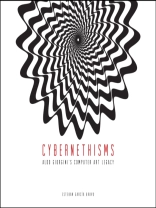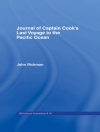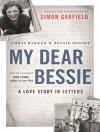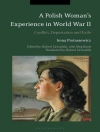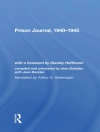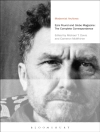Working extensively as both artist and scientist, Aldo Giorgini (1934-1994) was one of the first computer artists to combine software writing with early printing technologies. His innovative process involved producing pen-plotted drawings that were embellished by painting, drawing, photography, and screen printing. This biography is the first to uncover the remarkable work and life of an underappreciated artist, providing insights into the innovative methods and computerized techniques he used to weave creations that seamlessly combined technological sophistication with artistic sensibility.Buried manuscripts, documentation, and art taken directly from Giorgini’s former studio in Indiana have been used to tell the story of this digital pioneer. The book explores the artist’s life as a professor of civil engineering at Purdue University as well as providing a catalog of his artistic contributions. Placing his work in the context of the wider development of computer art, the book also presents a valuable contribution to the history of the field. Giorgini’s papers have been recently transferred to Purdue University’s Virginia Kelly Karnes Archives and Special Collections Research Center, where they will be preserved and made accessible for future researchers of digital media art history. While complete in itself, this book also plays an important role in contextualizing and providing an access point for that collection.
Зміст
Acknowledgments
Introduction
I. A Biography of Aldo Giorgini
The Beginnings
Fields: A Numerical Visual Laboratory
Aesthetics in Technology
Stretched Surfaces
Quasi-Photographic
Later Years
II. Computer Art in Context
III. Future of the Collection
IV. Selected Texts by Aldo Giorgini
Fields (1975)
Experiments in Computer Visualization (1975)
Black Boxes and Art: Chisels and Computers (1975)
Palette (1980)
Stretch (1981)
Pueblo (1982)
V. A Biographical Sketch of Aldo Giorgini
References
Про автора
Esteban García Bravo is an artist who researches computer art history and digital media art practices. He earned his MFA in studio arts and a Ph D in technology from Purdue University. His research has been featured in the annual meetings of international organizations such as SIGGRAPH (2011) and ISEA (2012, 2013), as well as in the publication Leonardo Journal of Arts, Sciences and Technology. García Bravo has participated in artist-in-residency programs, including Estímulos (Colombia/Venezuela, 2004), Lugar a Dudas (Colombia, 2007), and 8550 Ohio (USA, 2013). His hybrid art practice has allowed him to participate in curated art shows and workshops across the globe, including Kilómetro-0 Urbano (Bolivia, 2005), the Live Performers Meeting (Italy, 2011), and the Museo de Arte Moderno de Bogotá (Colombia, 2013). García Bravo is currently an assistant professor in the Department of Computer Graphics Technology at Purdue University, where he teaches digital imaging foundations and computational aesthetics.
